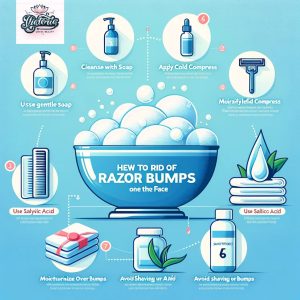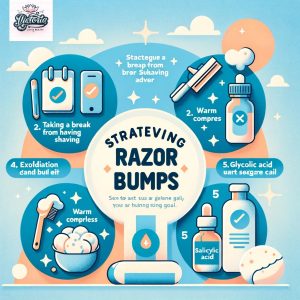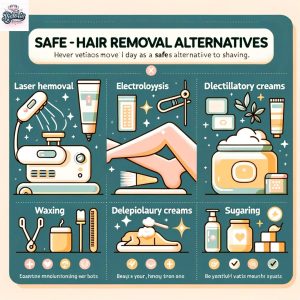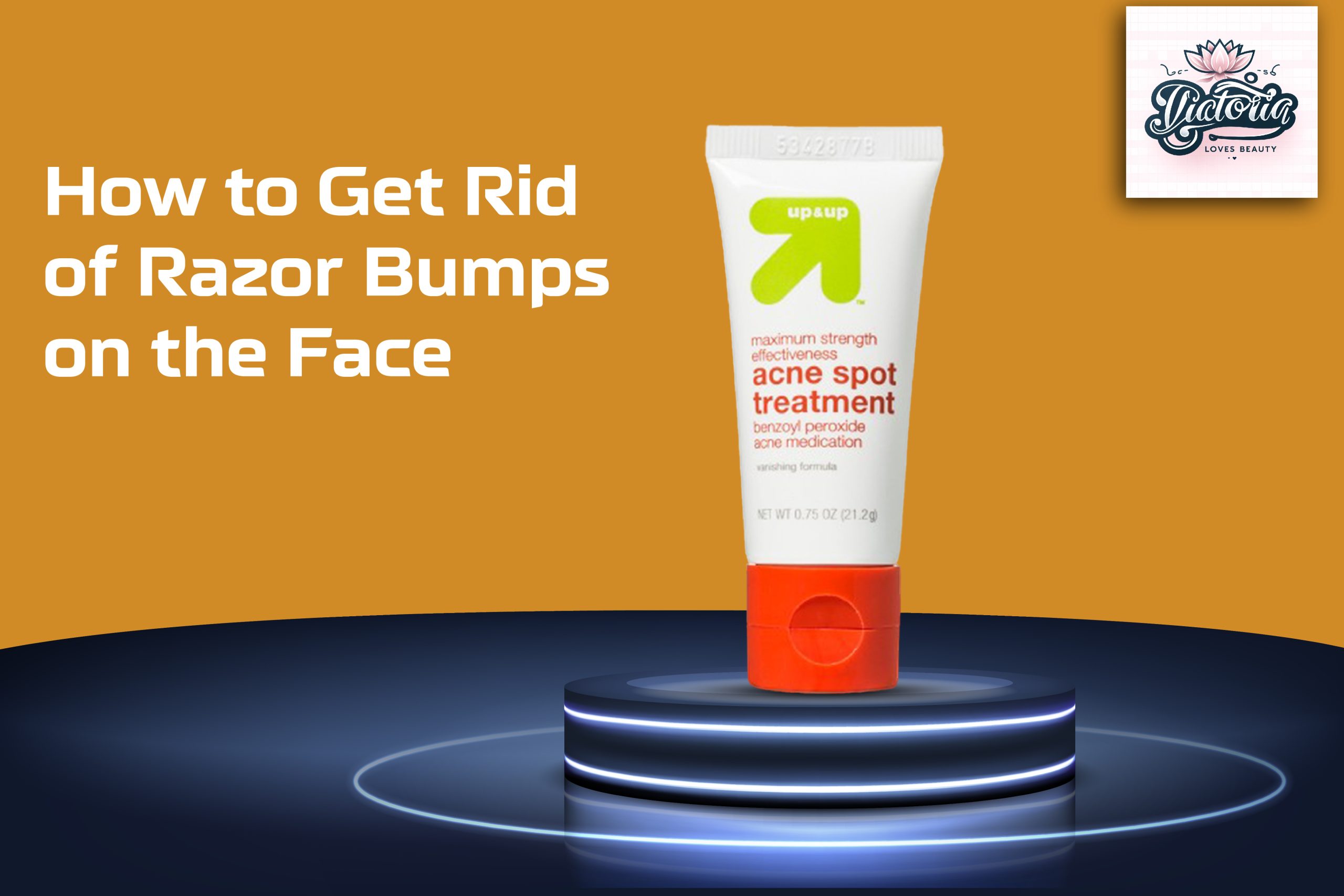Many people consider shaving a regular aspect of grooming, yet it frequently has an unwanted side effect: razor pimples. These tiny, itchy lumps can cause discomfort and self-consciousness, mainly when they appear on the face. These annoying bumps may be managed, and even prevented, by investigating practical remedies and learning the reasons. Let’s explore the causes of razor bumps, treatment options, and strategies to stop them from happening again.
Recognizing Razor Bumps
Pseudofolliculitis barbae, the technical term for razor bumps, is a common skin ailment that can cause discomfort and irritation, especially in individuals who regularly shave. Let’s examine the nature of these bothersome bumps and the variables that lead to their appearance to comprehend them better:
- What Are They? Essentially, razor bumps are ingrown hairs that irritate the Skin. They frequently cause itching or pain and become tiny, red, or inflammatory pimples. Although these bumps can appear anywhere on the body, they are most frequently found in locations where the hair is curly or coarse. This results from curly hair’s tendency to curl back into the skin due to its structure.
- Why Do They Occur? The re-entry of shaven hair into the Skin is the leading cause of the formation of razor bumps. Shaving at an angle can easily cause hair to coil back into the hair follicle rather than grow out of the Skin, especially if the razor is dull or not used properly. This sets off an inflammatory response that results in the familiar redness and pain that come with razor bumps.
- Who Gets Them? Razor bumps can afflict anyone with any hair, although certain groups are more likely to have them than others. The peculiar characteristics of curly or coarse hair, which increase its susceptibility to ingrown hairs, are frequently observed in these individuals. Razor bumps are also frequently seen in individuals.

Preventive Measures
Shaving Technique:
-
- Shaving in the Direction of Hair Growth: Shaving against the direction of hair growth can increase the likelihood of hairs curling back into the skin, leading to razor bumps. Shaving in the same direction as hair growth reduces the chances of ingrown hairs.
- Using a Razor Designed for Sensitive Skin: Razors for Sensitive Skin often have features like extra blades, lubrication strips, or protective guards. These features provide a smoother, less irritating shave, reducing the risk of razor bumps.
- Avoiding Close Shaves: Shaving too close to the Skin can cut the hair below the surface, increasing the likelihood of ingrown hairs. Leaving a small amount of stubble can help prevent this issue.
Skin Preparation:
-
- Softening Hair and Skin: Softening hair and Skin before shaving is crucial. Shaving cream or gel helps create a protective barrier between the razor and your Skin. It also softens the hair, making it easier to cut cleanly.
- Hot Compress: Applying a hot compress or warm towel to the shaving area before shaving can further soften the hair and open up the pores. This not only aids in a closer and more comfortable shave but also reduces the chances of irritation and razor bumps.
Post-Shaving Care:
-
- Cold Compress: Applying a cold compress can help soothe any potential irritation after shaving. It reduces redness and inflammation, providing immediate relief to the Skin.
- Aftershave: An aftershave product designed to calm and moisturize the skin is essential. It helps restore the Skin’s balance, reduces redness, and prevents post-shave dryness. Look for alcohol-free aftershaves, as alcohol can be harsh on the Skin and exacerbate irritation.
Effective Home Remedies

Taking a Break from Shaving:
- Goal: By giving up shaving temporarily, you give your skin time to heal from any discomfort. It also stops new razor bumps from growing.
- Benefits: Letting your skin rest can help decrease irritation and promote the natural emergence of ingrown hairs. It’s beneficial if you have many razor bumps because shaving more often might worsen the condition.
Warm Compress:
- Goal: To soften the Skin and hair in the afflicted region using a warm, damp washcloth. Ingrown hairs that have become stuck may find it simpler to come free thanks to its relaxing action.
- Benefits: The warmth and wetness of the compress relax hair follicles, reducing the likelihood that hairs will stay lodged in the Skin. Additionally, it might offer instant relief from soreness and irritation.
Exfoliation:
- Goal: Gently exfoliating the Skin can assist in getting rid of dead skin cells encasing hairs underneath the surface. Ingrown hairs are encouraged to come out, and further obstructions are avoided.
- Benefits: Exfoliation helps enhance skin texture and release trapped hairs correctly. To prevent additional discomfort, it’s crucial to use a soft brush or scrub and to be gentle.
Salicylic Acid:
- Goal: One of the benefits of salicylic acid, a beta-hydroxy acid (BHA), is its capacity to clear clogged pores. Ingrown hairs can be released, and inflammation can be decreased due to its ability to break down the connections that hold skin cells together.
- Benefits: Salicylic acid works well as a razor bump treatment. It soothes and heals the damaged region in addition to helping to release trapped hairs.
Glycolic Acid:
- Goal: An alpha hydroxy acid (AHA) glycolic acid encourages Skin exfoliation. Eliminating dead skin cells reduces the possibility that hairs may curl back into the Skin.
- Benefits: Glycolic acid accelerates skin exfoliation, preventing the accumulation of dead skin cells that may lead to ingrown hairs. Additionally, it might enhance the Skin’s general look and texture.
Medical Treatments
OTC Creams (Over-the-Counter):
-
- Purpose: Over-the-counter creams containing steroids can effectively reduce inflammation and manage minor infections associated with razor bumps.
- How They Work: Steroids have anti-inflammatory properties, and when applied topically, they help calm the Skin’s inflammatory response. This can alleviate redness, swelling, and discomfort associated with razor bumps.
- Benefits: OTC creams can be suitable for individuals with mild to moderate razor bump symptoms. They are readily available and can provide relief without needing a prescription.
Prescription Retinoids:
-
- Purpose: In more severe or recurrent cases of razor bumps, a dermatologist may prescribe retinoids, such as tretinoin, to prevent the formation of new razor bumps and treat associated acne.
- How They Work: Retinoids promote skin cell turnover and prevent hair follicles from becoming clogged. They also have anti-inflammatory properties, which can help reduce the severity of razor bump symptoms.
- Benefits: Prescription retinoids are potent and effective for individuals with persistent or severe razor bump issues. They treat existing bumps and help prevent new ones from forming. However, they should be used under the guidance of a dermatologist due to potential side effects.
Professional Treatments:
-
- Purpose: Professional treatments may be considered for long-term relief of recurring, stubborn razor bumps.
- Options: One such professional treatment is laser hair removal. This procedure uses concentrated laser energy to target and destroy hair follicles, reducing hair growth in the treated area. Reducing hair growth significantly minimizes the risk of ingrown hairs and razor bumps.
- Benefits: Laser hair removal can provide long-lasting relief from razor bumps and ingrown hairs. It is particularly effective for individuals who have struggled with persistent razor bump issues and are looking for a more permanent solution.
Managing Complications
Keeping up with razor bump issues is essential to keeping skin healthy. See a dermatologist immediately if you experience serious infections, hyperpigmentation (Skin darkening), or scarring from razor pimples. Dermatologists are adept at treating various skin conditions and can create specialized treatment regimens to handle side effects efficiently.
Regarding how soon things might get better, it’s usually advised to stop shaving for a while after getting razor bumps. After stopping shaving, you should often see an improvement in the condition in approximately a month. The redness and swelling should go down, and the afflicted regions will begin to recover. It often takes three months for razor bumps to go away completely. Maintaining good skin care practices and taking preventative steps during this period is critical to speed up healing and prevent additional bumps from developing. Remember that each person may react differently; therefore, your treatment regimen must be patient and persistent for the most significant outcomes.
Special Considerations
Taking special considerations while managing razor bumps entails identifying particular situations and elements influencing how people perceive and manage this frequent skin issue. The following are some crucial particular things to remember:
- Skin Sensitivity: People with sensitive Skin may be more prone to irritation and razor bumps. They must select shaving tools and methods suited to their skin types, such as sensitive skin-friendly razors and hypoallergenic shaving lotions.
- Ethnicity and Hair Type: The chance of getting razor bumps is significantly influenced by hair type. Curly or coarse-haired people are more vulnerable, and this is a common observation in people of Middle Eastern, African, and Hispanic origin. Knowing the relationship between your hair type and shaving can help you implement targeted prevention and treatment strategies.
- Underlying Skin Conditions: Folliculitis and acne are two conditions that razor bumps can occasionally be confused for or coexist with. You must consult a dermatologist for a precise diagnosis and suitable treatment if you have an underlying skin issue.
- Expert Consultation: Getting advice from skincare specialists like dermatologists or aestheticians can be helpful if you have severe or recurring razor bump problems. These professionals can offer customized guidance and therapy choices to address specific issues.
Safe Hair Removal Alternatives:
Safe Hair Removal Alternatives give people hair removal choices that reduce the chance of razor bumps, ingrown hairs, and skin irritation. Those prone to razor bump-related problems or sensitive Skin may find these substitutes especially helpful. Consider the following safe options for hair removal:

Waxing:
-
- How It Works: Waxing involves applying hot or cold wax to the Skin, which adheres to the hair. When the wax is pulled off, it removes the hair from the root.
- Benefits: Waxing provides longer-lasting results than shaving, as it removes hair from the root. It also exfoliates the skin, reducing the likelihood of ingrown hairs.
- Considerations: Waxing can be temporarily uncomfortable and may cause redness immediately after the procedure. It’s essential to follow proper aftercare to soothe the Skin.
Electrolysis:
- How It Works: Electrolysis involves using an electric current to destroy hair follicles permanently.
- Benefits: Electrolysis offers permanent hair removal results and can be suitable for small areas.
- Considerations: It may require multiple sessions, and professional expertise is necessary for safe and effective treatment.
Laser Hair Removal:
-
- How It Works: Laser hair removal uses concentrated laser energy to target and destroy hair follicles. Over time, this reduces hair growth in the treated area.
- Benefits: Laser hair removal offers long-term results and can effectively prevent ingrown hairs and razor bumps.
- Considerations: It typically requires multiple sessions for permanent hair reduction. Professional treatment is recommended for safety and efficacy.
Epilators:
-
- How They Work: Epilators are handheld devices with rotating tweezers that grasp and remove hairs.
- Benefits: Epilators provide longer-lasting results than shaving and can be used on various body areas.
- Considerations: Some people may find epilation uncomfortable, especially during the initial use. Regular exfoliation is recommended to prevent ingrown hairs.
Final Thoughts
- Smooth Skin Awaits: Achieving smooth, bump-free Skin after shaving is within reach.
- Understanding the Culprit: Razor bumps can be a common nuisance, but understanding their causes is the first step to managing them effectively.
- Prevention is Key: Shaving technique, skin preparation, and post-shave care are vital in preventing razor bumps.
- Home Remedies for Relief: Simple home remedies like warm compresses and exfoliation can ease discomfort.
- Medical Help When Needed: Medical treatments like retinoids and laser hair removal offer solutions for severe cases.
- Special Considerations: Tailoring your approach based on skin type, hair type, and individual needs is essential.
- Safe Alternatives: Explore safe hair removal alternatives to minimize the risk of razor bumps.
- Smooth and Confident: With the proper knowledge and care, you can enjoy smooth, bump-free Skin and feel confident in your grooming routine.

Beauty enthusiast, mom on-the-go, and coffee addict (not necessarily in that order!). When she’s not chasing after her adorable toddler, Victoria is busy researching the latest beauty trends, testing out products, and sharing her discoveries with the world. Join her on this journey of self-care, empowerment, and finding your own unique spark of beauty!
